Many gardeners, especially those living in areas with a harsh climate, prefer to grow vegetables, including cucumbers, in greenhouses. But greenhouses are not suitable for cultivating some varieties. To obtain a high yield of cucumbers, you need to know which varieties are intended for cultivation in closed ground conditions.
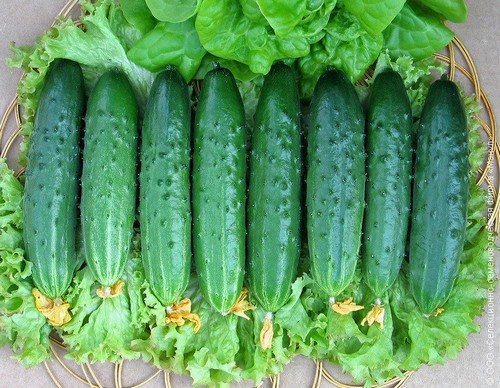
Criteria for selecting seed material
Stores selling goods for gardens and vegetable gardens offer seed material of various types of cucumbers. Every year, new varieties grown by breeders are added to the old varieties.
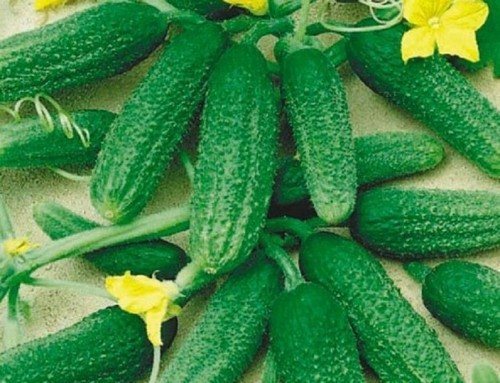
When choosing seeds, it is necessary to take into account the main criteria that affect the quantity and quality of the harvest:
- growing region;
- ripening time;
- fruit dimensions;
- pollination methods;
- resistance to infections and fungi.
Cultivation of cucumbers in greenhouse conditions partially equalizes climatic differences between regions. There are cucumber hybrids that successfully bear fruit in any region. In addition, breeders have created zoned varieties intended for a specific region.
Early ripening plants are best suited for cultivating cucumbers in mid-latitudes, the Urals and Siberia.
If vegetables are intended for making salads, then you can plant seeds of long-fruited species. Small cucumbers - gherkins or pickles - are more suitable for canning.
One of the main parameters that determines the choice of seed material is the method of pollination.
Cucumber varieties are divided into:
- pollinated by insects;
- self-pollinating;
- growing without pollination (parthenocarpic).
Having planted plants that require pollination by insects, you will have to install a hive with bees in the greenhouse or carry out the pollination procedure manually. Planting hybrid self-pollinating or parthenocarpic cucumbers eliminates such problems.
In addition, hybrids are more resistant to disease than older varieties, many of which can taste bitter. Hybrids have no bitterness. The only disadvantage of hybrid cucumbers is the inability to collect seed material. Seeds will have to be purchased every season. But a high harvest will pay for all costs.
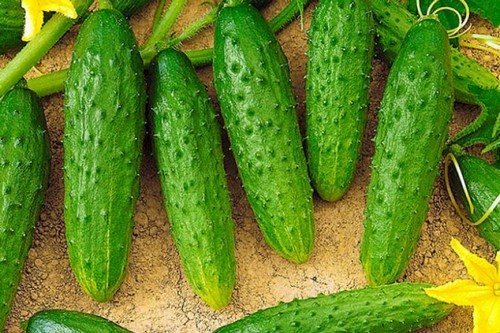
The best hybrid varieties
When choosing seed material, the purpose of the future harvest is taken into account. Fruits with thick skin and sweet pulp are classified as salad varieties. Thin-skinned cucumbers are intended for preservation.
They are distinguished by dark pimples and tubercles. Universal varieties are considered the best for cultivation in greenhouses. They can be eaten fresh and stored for the winter.
Varieties such as Uran, Masha, German, Adam, Murashka, Meringue, Zyatek, Kurazh have become widespread. All hybrids are designated by the special F1 marking indicated on the seed package.
Uranium F1
One of the new products that have recently appeared on the seed market is the brainchild of Japanese breeders from the Sakata company - Uranium F1. The first greens ripen already 30-35 days after planting. The fruits are small, reaching a length of 10-12 cm and weighing about 70 grams.
Cucumbers have a smooth, cylindrical shape with a dark green tint. There is no bitterness or voids in the pulp.
The main advantages of this variety include:
- high yield;
- excellent taste and aroma;
- transportability;
- resistance to infections;
- long shelf life;
- universal application.
Due to the early ripeness of the crop, seeds can be planted more than once per season. Moreover, a large number of fruits ripen at the same time. This allows you to get from 1 sq.m. about 20 kg of cucumbers.
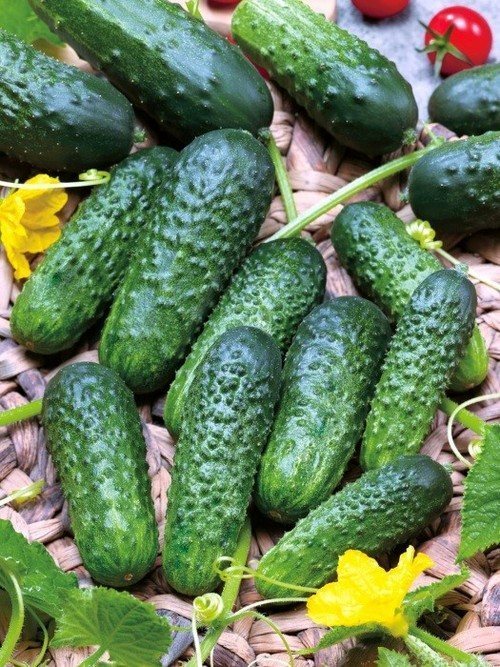
Masha F1
The Dutch gherkin Masha F1 is in high demand among gardeners. It is intended for cultivation in closed ground conditions and belongs to early ripening parthenocarpic varieties.
Light stripes run along the dark green skin of the cylindrical fruit. The entire surface of the greens is strewn with thorns with whitish fluff. The average length of green cucumbers does not exceed 100 mm, the weight of each fruit is about 100 g. Crispy and dense cucumbers are used not only for preparing salads, but also for canning.
One of the advantages of this hybrid is the ability to fight the most common diseases: powdery mildew, cucumber mosaic virus.
In addition, plant care is simplified due to its determinacy. And the presence of only female flowers eliminates the formation of barren flowers. Thanks to this, Masha’s yield is high - 10-11 kg per 1 sq.m.
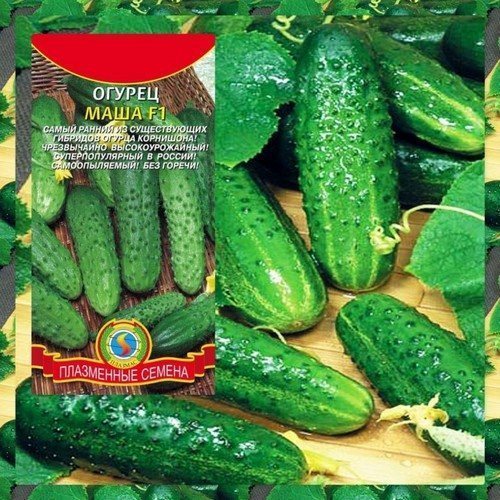
Herman F1
The most popular hybrid from Holland, Hermann F1, produces high yields when cultivated in greenhouses. Early ripe fruiting allows you to see the first ovaries after 36-38 days, and after 40-45 days you can begin harvesting.
Characteristic features of the variety:
- tubular shape;
- rich green tint;
- light stripes closer to the top;
- white pimples;
- fruit length – 8-10cm;
- the weight of one greens is about 85g.
The light green pulp of cucumbers is slightly sweet, without bitterness.Herman can be transported over long distances and stored for a long time.
This variety is not afraid of powdery mildew, cladosporiosis and mosaic. But it cannot resist aphids, spider mites and rust, so it needs preventive measures.
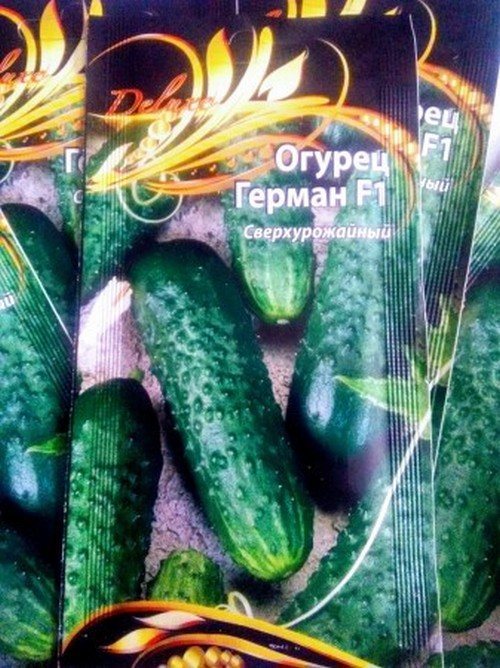
Adam F1
The mid-early Dutch hybrid variety Adam F1 produces the first greens 45-50 days after germination.
Green cucumbers, covered with small cones with a white edge, weigh about 90 g. Their length does not exceed 10 cm. The diameter of the fruits collected on time is 3-3.5 cm. But when harvesting time is delayed, the cucumbers take on a pot-bellied shape.
The advantages of the variety include:
- high yield (9-10 kg per 1 sq.m.);
- resistance to many diseases (powdery mildew, olive spot, cucumber mosaic);
- long shelf life;
- ability to withstand transportation.
Cucumbers are covered with a thin peel. The juicy pulp with a sweetish taste crunches pleasantly. Emptiness and bitterness are absent.
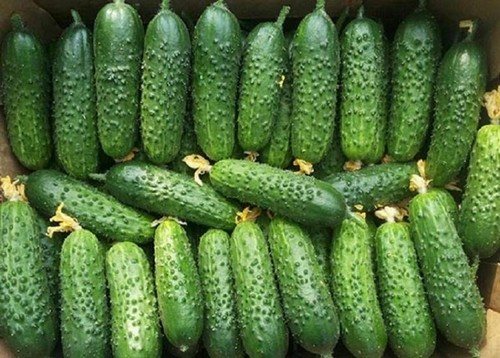
Murashka F1
The cucumber hybrid Murashka F1, grown by Russian breeders, belongs to the early ripening varieties. The first harvest occurs 40-42 days after germination of seedlings.
The short fruits, reaching a length of 11-12 cm, are cylindrical in shape and weigh about 100 g. A distinctive feature of this variety is the black prickly spines on the peel.
The cucumber itself is green, lighter towards the top. Wide light stripes stretch from the middle to the tip. The thin peel and crisp, bitter-free pulp allow it to be used for canning and adding to salads.
Most cucumber infections are not scary for Murashka. But root rot and downy mildew can affect the plant.
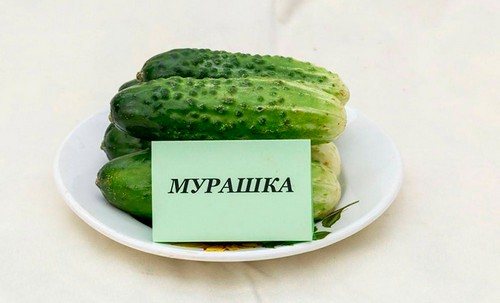
Meringue F1
The short-fruited hybrid Meringue F1 from Dutch breeders has gained popularity due to its high yield - up to 15 kg per 1 sq.m. The fruits of the correct, tubular shape are formed together on the 35-40th day after the sprouts have formed.
The thin green skin with weakly expressed faded stripes is covered with whitish thorns. The cucumbers reach 10-12 cm in length and weigh 65-70 grams.
When in the garden, the fruits are able to maintain their shape for a long time and not turn yellow. The dense pulp of cucumbers is not bitter. The taste is excellent. Fruiting is maintained throughout the growing season.
Resistant to most viral and fungal infections.
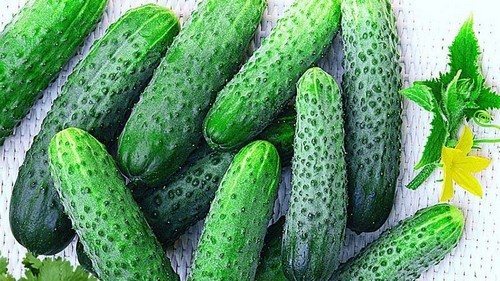
Zyatek F1
The brainchild of Russian breeders Zyatek F1 is an early-ripening hybrid that allows you to harvest 43-45 days after the first shoots have hatched. The variety is universal, so for canning you can collect 5 cm long pickles and 9 cm long gherkins. Cucumbers that have reached a size of 10-12 cm are used for salads.
Characteristics of cucumbers:
diameter - 30-35 mm;
- weight - about 100 g;
- shape - cylindrical;
- skin - dark green, covered with short light stripes;
- skin is dotted with tubercles with white spikes;
- skin is thin;
- seeds are small;
- the flesh is crispy with a juicy, aromatic taste.
- Insecticide Teppeki: instructions for use to protect plants from pests
Kurazh F1
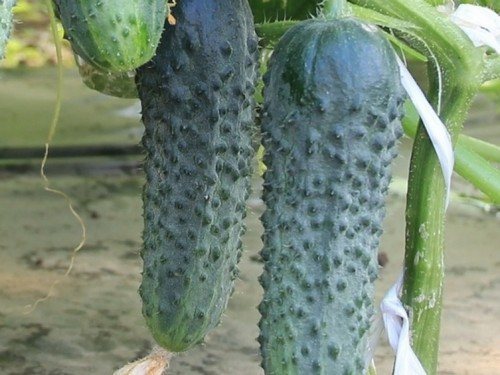
Another hybrid created by Russian breeders is Kurazh F1. Fruiting continues until autumn.
The fruits are formed correctly, do not curl into hooks and have a correct cylindrical shape. The taste and aroma of the cucumbers are preserved for 10 days after removal from the garden.The short-fruited hybrid Meringue F1 from Dutch breeders has gained popularity due to its high yield - up to 15 kg per 1 sq.m. Regular, tubular-shaped fruits are formed 35-40 days after the formation of sprouts.
The thin green skin with faintly pronounced faded stripes is covered with whitish spines. Zelentsy reach a length of 10-12 cm and weigh 65-70 grams.
When in the garden, the fruits are able to retain their shape for a long time and not turn yellow. The dense pulp of cucumbers is not bitter. The taste is excellent. Fruiting continues throughout the growing season.
Resistant to most viral and fungal infections.

Zyatek F1
The brainchild of Russian breeders, Zyatek F1 is an early-ripening hybrid that allows harvesting 43-45 days after the first shoots peck.


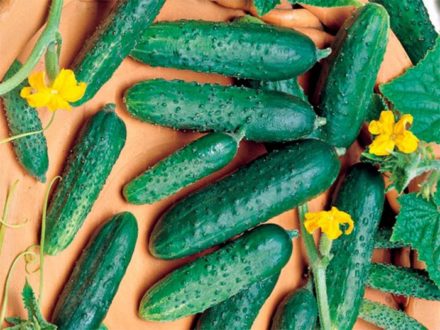
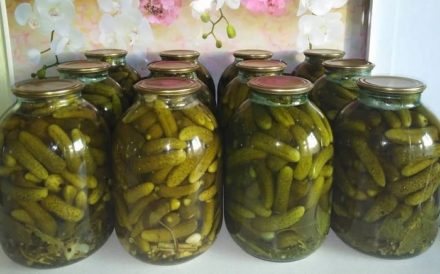
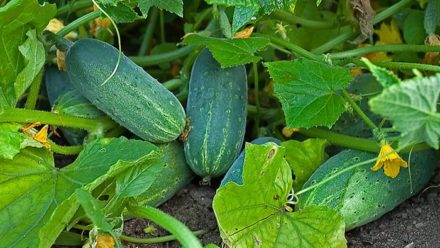
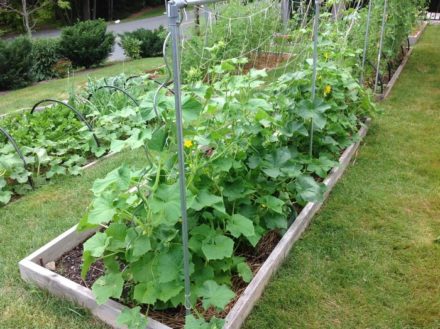
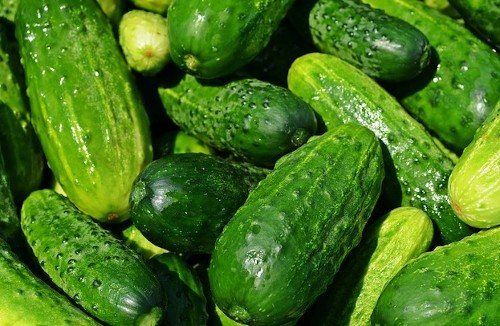
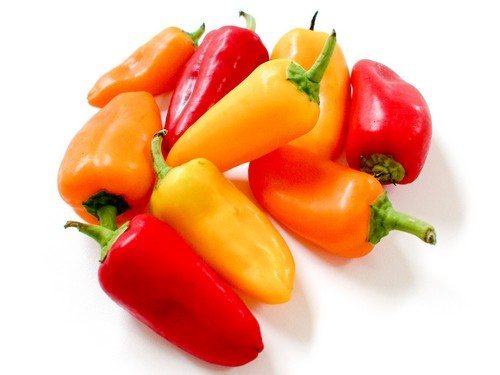
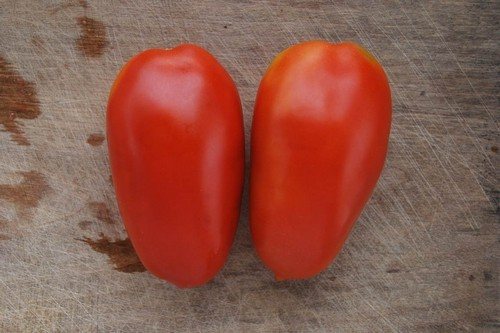



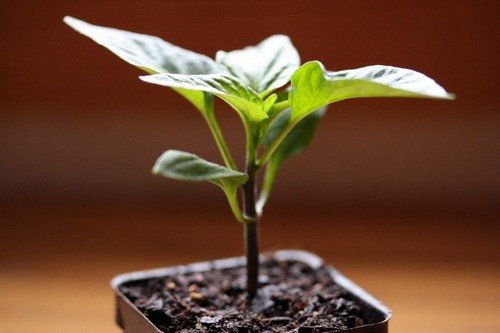
The fruits are formed correctly, are not wrapped in hooks and have a regular cylindrical shape. The taste and aroma of greens remains for 10 days after being removed from the garden.
Delicious, sweetish fruits, which are completely free of bitterness, can be salted, pickled, preserved, and added to salads and soups.